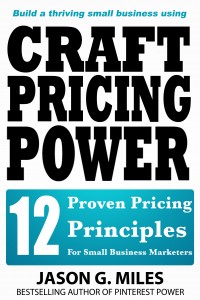In Priceless: The Myth of Fair Value (and How to Take Advantage of It) , author William Poundstone describes Prada’s business model for us. He says,
, author William Poundstone describes Prada’s business model for us. He says,
“Prada believes in engineering the context”
By engineering the context he means creating a context in which a $300 purse seems like a good deal. How do you do that? You set it next to a $2,400 purse. The $2,400 purse is the anchor, the $300 purse is the one they really wanted you to buy all along.
He goes on to say:
[Prada] paid over $1,700 per square foot for its Rem Koolhaas designed store in SoHo and is forking over equally stratospheric rents. It would not devote floor space to goods that hardly ever sell unless there was a reason for it. Trade-off contrast, (the system of setting a high priced item next to a low priced item), is part of the cost of doing business… It’s not unusual to find items similar to the high-priced anchor selling for a tenth as much. Anyone who can’t swing that can always try the $300 sunglasses. Or the $110 mobile phone charm.
What exactly is anchoring in the context of pricing? It was first described by two ‘behavior decision’ theorists named Amos Tversky and Daniel Kahneman. They described it like this:
“An initial value (the anchor) serves as a mental benchmark or starting point for estimating an unknown…” The unknown is the true value of an item.
Do you have an anchor? Can you create one? It might be a wise strategy.
 This is a continuation of our Pricing Power – 10 Proven Pricing Principles posts. See the prior post, #1, #2, #3, #4, and #5 here.
This is a continuation of our Pricing Power – 10 Proven Pricing Principles posts. See the prior post, #1, #2, #3, #4, and #5 here.